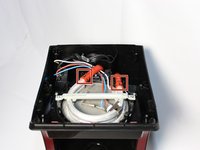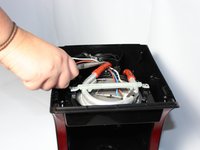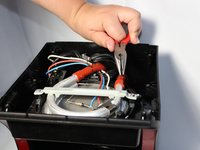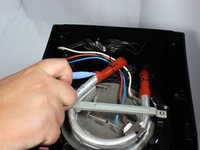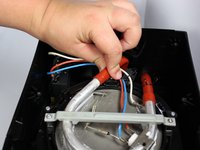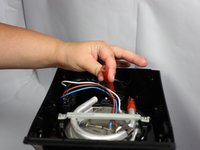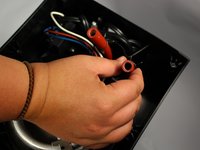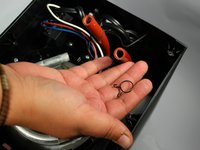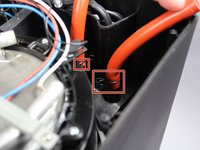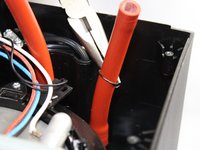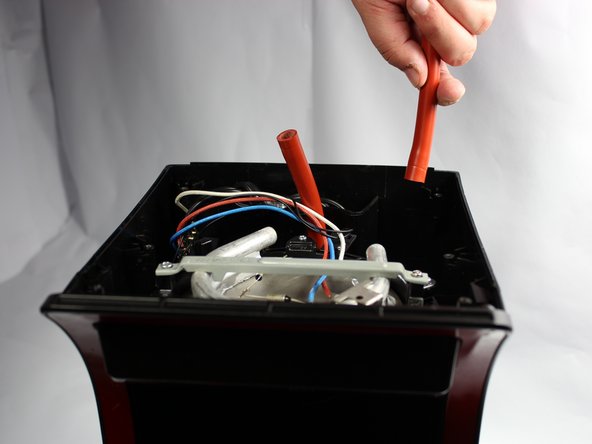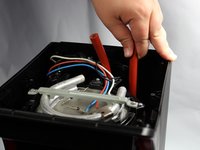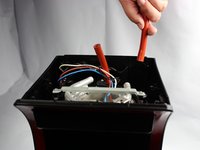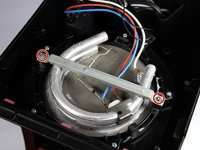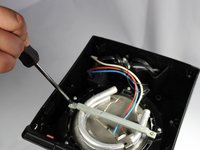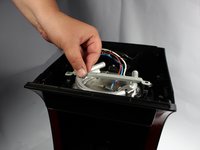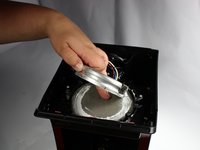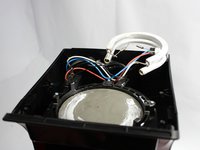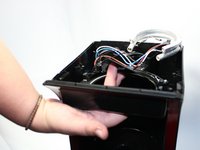Einleitung
This guide to replace the heating plate of the Mr. Coffee BVMC-SJX33GT will be particularly useful if the heating plate your carafe sits on burns or corrodes in some way.
Make sure your coffee maker is unplugged and empty of all water before attempting to make any repairs.
Was du brauchst
-
-
Locate the seven 13.5mm screws securing the base to the coffee maker.
-
Unscrew the screws using a #2 Phillips head screwdriver.
-
-
-
Also the front two screws are safety screws: they have a 6 sided star shape with a raised dimple in the center to prevent homebodies from casually opening the machine. (probably from the Sunbeam’s (owns Mr. Coffee) legal dept.) Anyway you will need a security bit to remove the screws and not a phillips screw driver.
-
-
-
-
Locate the metal clamps.
-
Using a pair of pliers or your fingers, slide clamps away from tube opening.
How to get replace hoses
Food grade silicone tubing Amazon Smile link https://smile.amazon.com/Univen-High-Gra...
-
-
-
Using a plastic opening tool, loosen rubber hose from metal tubing.
-
Once loosened, grip the hose and pull it from the metal tubing.
-
-
-
Locate the other set of metal clamps.
-
Using needle nose pliers or your fingers remove these clamps by pinching the clamps and sliding them up the tubes.
-
-
-
Grip the hoses and pull them straight up and out.
I have the same coffee maker as pictured. I removed the clamps, and the first hose came off easily. The hose housing the valve would not come loose. I ended up tearing the hose while trying. Any ideas for a replacement hose? And how to get this torn one off?
Very helpful procedure. All 7 screws on my maker were Philips heads so thankfully did not need that special tool. As I did not have a spare valve, I ran water through mine and confirmed the operation of the valve by blowing on each side. The valve seems clear and working as it should but after reassembly sadly it made no difference. I think in my case there must be something wrong with the heater circuitry and will have to dig a bit deeper to determine what failed and if it is worth (or even possible) to replace the defective part.
-
-
-
Locate the two 17mm screws securing the bracing bar.
-
Unscrew the screws with a #2 Phillip's head screwdriver and remove the bracing bar
Note that a common failure point in this kind of appliance is the thermal fuse, seen in the above photo as the electronics-looking thing in the photo above, connected to the blue wire. If the coffee pot will not heat at all, check this fuse with a multimeter to see if it’s blown. It could save you the frustration of a replacement heating element that does not solve the problem.
-
-
-
Using a finger to keep the heating plate in place, grip the metal tubing and gently pull it away from the plate.
-
Set the metal tubing aside.
-
-
-
Push the heating plate up from below and remove.
Thank you for the article. However, you forgot to mention what to do about the thermal compound that is applied to the underside of the warming plate. If the appliance is an older model, the thermal paste will have dried and cracked. A lot of it will probably fall off. This paste is crucial for transferring heat from the heating element to the warming plate. It is similar to the paste used when mounting CPUs to a motherboard. I'm trying to find jars of it instead of the little tubes, which would require 1-2 tubes to do it right. Anyway, I hope this helps. Thanks again for the article!
Greg
-
To reassemble your device, follow these instructions in reverse order.
To reassemble your device, follow these instructions in reverse order.
Rückgängig: Ich habe diese Anleitung nicht absolviert.
3 weitere Personen haben diese Anleitung absolviert.
6 Kommentare
I need to know which of the various high-heat thermal paste should be used that will maintain re-bonding the heating tube to the heating plate. The manufacturer did not use thermal grease as it appears it will not maintain the bond between the heating tube and the heating element. They instead used a vertically stable paste that assumes a hardened consistency of chalk to best maintain the bond in the presence of water. However, I have yet to find the proper paste which bonds while tolerating the sufficient intermittent high heat ratings required. The manufacturer has been unable to provide any assistance or information. Can you please tell me what material to use in this circumstance. Thanks KB.
I am unfortunately unaware of the answer to this question. I hope someone else can answer it.
The two inline thermal fuses (brass cylinders with a black end) are far more likely to fail than the heating element. Check them first.
T99 or Super Lube
3 oz. Tube Heat Sink Compound
can be used with the heater.
Where can I obtain the heating plate? The coating has burned off and now rust corrosion has to scrubbed off after every use (including off the glass pot!!). Thanks.
Liked to video. Thanks for posting. Where can I purchase the black metal heating plate for Oster coffee maker or any maker?
First, you don't need to remove the water tubes to remove the hot plate. Second, you don't need to worry about gluing the hot plate back together with the hot element. Once you screw down the cross-bar, the hot plate will be secure, no need to glue the plate! Regarding this metal hot plate disc, I have not found any replacement disc for my Mr. Coffee maker, anywhere. After sanding and cleaning the disc, I painted it with multiple coats of Rust-Oleum primer and paint (Red). I now believe that I can replace the metal disc with a glass disc. The glass disc can handle up to 400 degrees Freiheit. The coffee maker's disc only gets up to around 200 degrees Freiheit. I will be buying the round Borosilicate 4 1/4 inch glass disc from mcmaster.com










